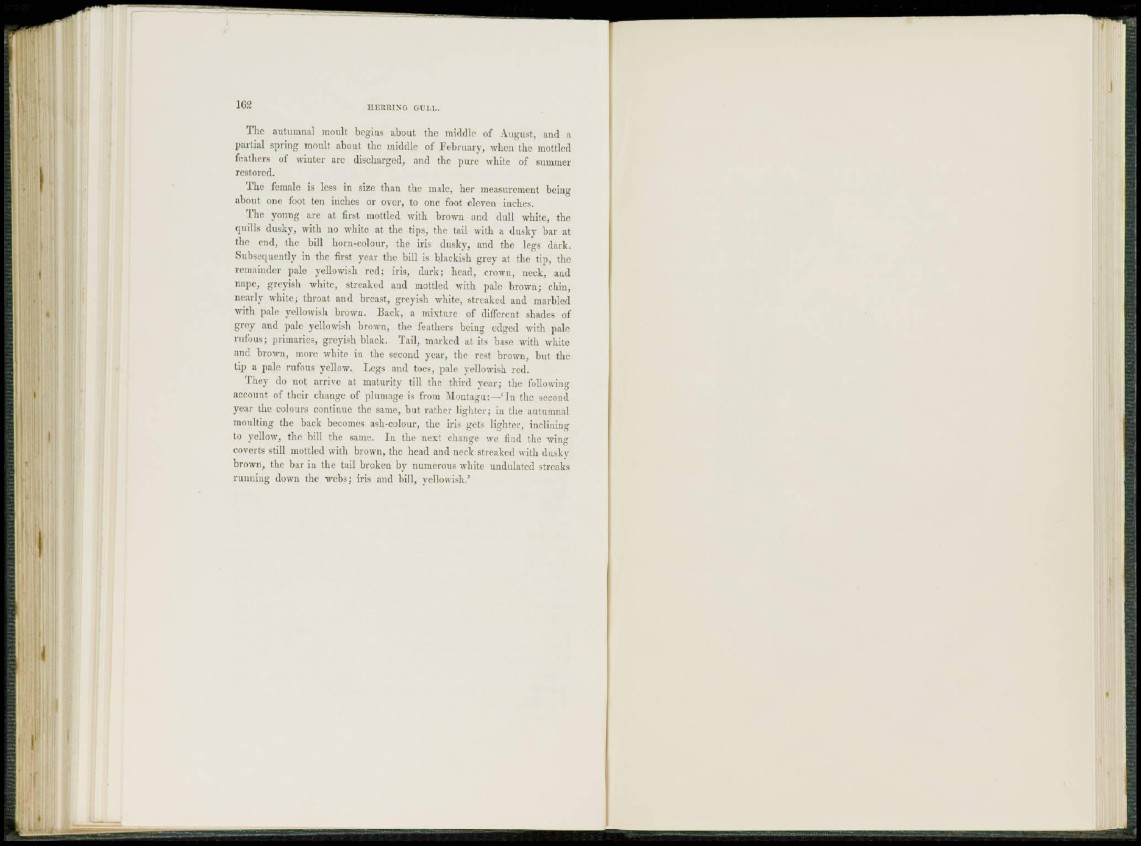
The autumnal moult begins about the middle of August, and a
partial spring moult about the middle of February, when the mottled
feathers of winter arc discharged, and the pure white of summer
restored.
The female is less in size than the male, her measurement being
about one foot ten inches or over, to one foot eleven inches.
The young are at first mottled with brown and dull white, the
quills dusky, with no white at the tips, the tail with a dusky bar at
the end, the bill horn-colour, the iris dusky, and the legs dark.
Subsequently in the first year the bill is blackish grey at the tip, the
remainder pale yellowish red; iris, dark; head, crown, neck, and
nape, greyish white, streaked and mottled with pale brown; chin,
nearly white, throat and breast, greyish white, streaked and marbled
with pale yellowish brown. Back, a mixture of different shades of
grey and pale yellowish brown, the feathers being edged with pale
rufous; primaries, greyish black. Tail, marked at its base with white
and brown, more white in the second year, the rest brown, but the
tip a pale rufous yellow. Legs and toes, pale yellowish red.
They do not arrive at maturity till the third year; the following
account of their change of plumage is from Montagu:—'In the second
year the colours continue the same, but rather lighter; in the autumnal
moulting the back becomes ash-colour, the iris gets lighter, inclining
to yellow, the bill the same. In the next change we rind the wing
coverts still mottled with brown, the head and neck streaked with dusky
brown, the bar in the tail broken by numerous white undulated streaks
running down the webs; iris and bill, yellowish.'